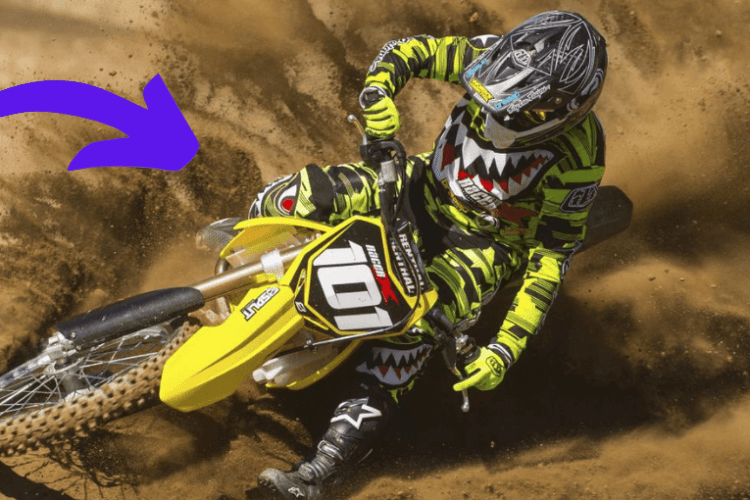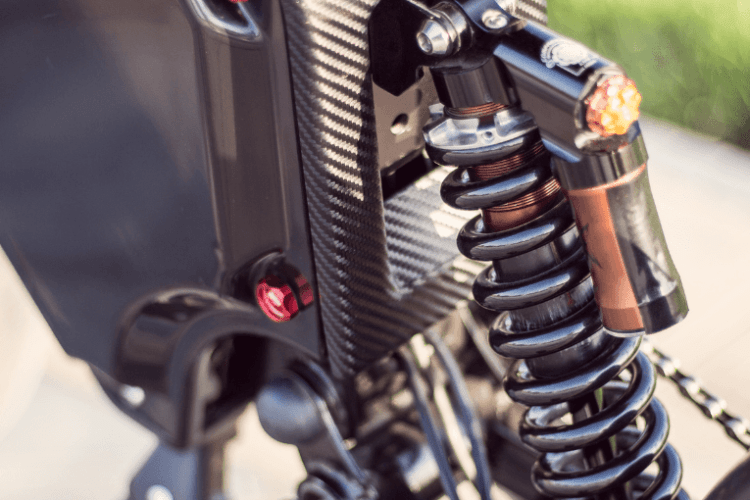The Science of a 125cc BMX Dirt Bike: Examining the Anatomy
When it comes to off-road biking, the 125cc BMX dirt bike is a popular choice among riders. But have you ever wondered what goes into making this bike tick?

I (Mr. Reko) have many years of experience with BMX dirt bikes. I’ll examine the anatomy of a 125cc BMX dirt bike and explore the science behind its various components.
From the engine to the suspension system, wheels, and brakes, I’ll take a detailed look at how each part works and its role in ensuring the bike’s performance.
Understanding the anatomy of a BMX dirt bike is essential for riders and enthusiasts. This post aims to provide a comprehensive guide to the subject.
The essential parts of a 125cc BMX dirt bike
A 125cc bike is a complex machine made up of several essential parts that work together to provide optimal performance. Here are some of the key components of a dirt bike:
Engine: The engine is the heart of the bike and provides power to drive it. In a 125cc BMX dirt bike, the engine is typically a single-cylinder, air-cooled, four-stroke engine.
Suspension: The suspension system is responsible for absorbing shocks and vibrations that occur during off-road riding. This bike has a front and rear suspension system consisting of springs and dampers.
Wheels and Tires: The wheels and tires are critical components that provide traction and stability to the bike. Most bikes have knobby tires that provide excellent grip in off-road conditions.
Brakes: The braking system is crucial for rider safety and includes front and rear brakes. This bike has disc brakes that provide excellent stopping power.
Exhaust System: The exhaust system is responsible for removing exhaust gases from the engine and consists of a header pipe, muffler, and catalytic converter.
Frame: The frame of a dirt bike is usually made of lightweight aluminum or steel and provides the necessary support and structure for the bike.
Handlebars: The handlebars provide the rider with control and steering of the bike. On a dirt bike, the handlebars are typically wide and have a crossbar for added strength.
Physics of a 125cc BMX Dirt Bike
A 125cc BMX dirt bike is subject to a number of fundamental principles of physics, which govern its motion and behavior. Here are some of the key principles of physics that apply to a dirt bike:
Newton’s laws of motion
Newton’s laws explain how moving objects behave. According to the first law, unless acted upon by an outside force, an object at rest will remain at rest and an object in motion will remain in motion.
The second law states that the force acting on an object is equal to its mass times its acceleration (F = ma). Every action has an equal and opposite reaction, according to the third law.
Kinematics
Kinematics is the study of how objects move without taking the forces behind the motion into account. It includes concepts such as position, velocity, and acceleration.
Dynamics
The analysis of motion-causing forces is known as dynamics. In the case of a dirt bike, the main forces include gravity, air resistance, and the forces generated by the bike’s engine and brakes.
Friction
The force that prevents motion between two surfaces in contact is known as friction. In the case of a dirt bike, friction plays an important role in the bike’s traction, which determines how well it can grip the ground and maintain control.
Momentum
An object’s momentum is equal to its mass times its speed. In the case of a dirt bike, momentum plays a role in determining how easy or difficult it is to change the bike’s direction or speed.
Energy
Energy is the ability to do work. In the case of a dirt bike, energy is stored in the bike’s fuel and converted into kinetic energy as the bike moves.
How the engine of a 125cc BMX dirt bike works
The engine of a 125cc bike is a single-cylinder, air-cooled, four-stroke engine. Here’s how it works:
Intake Stroke: During the intake stroke, the piston moves down, creating a vacuum that draws air and fuel into the cylinder through the intake valve.
Compression Stroke: During the compression stroke, the piston moves back up, compressing the air and fuel mixture in the cylinder.
Power Stroke: At the top of the compression stroke, the spark plug ignites the compressed air/fuel mixture, causing a rapid expansion of gases that drives the piston down, providing power to the bike.
Exhaust Stroke: During the exhaust stroke, the piston moves back up, pushing the exhaust gases out of the cylinder through the exhaust valve.
Types of suspension in 125cc BMX dirt bike
A 125cc BMX dirt bike may use various types of suspension systems, depending on its intended use and design. Here are some of the most common suspension systems used in dirt bikes:
Front Suspension
Most dirt bikes feature front suspension systems to absorb impacts and smooth out the ride. The most common type of front suspension is a telescopic fork, which uses hydraulic dampening to absorb bumps and jumps.
Rear Suspension
The rear suspension system helps absorb impacts and maintain traction. Most dirt bikes use a single or dual shock absorber system to cushion the rider.
Full Suspension
A full suspension system incorporates both front and rear suspension systems to provide maximum shock absorption and stability. This type of suspension is common on high-end dirt bikes.
Upside-down Forks
Upside-down forks, also known as inverted forks, are a type of front suspension system where the larger diameter tubes are at the bottom, and the smaller tubes are at the top. This design increases the rigidity of the front suspension, making it more responsive to rider inputs.
Air suspension
Air suspension systems use compressed air to adjust the stiffness of the suspension. It allows riders to fine-tune their bike’s suspension for their specific needs.
Wheels and tires in a 125cc BMX dirt bike
The wheels and tires used in a 125cc BMX dirt bike are an essential component of the bike’s performance and handling. Here are the specifications for wheels and tires of dirt bike:
Wheel size: Most 125cc BMX dirt bikes feature 17-inch wheels, but some models may use 19-inch wheels.
Rim material: The rims on dirt bikes are usually made from aluminum alloy to reduce weight and improve durability.
Spokes: Dirt bike wheels typically have high-quality stainless steel spokes that provide strength and resilience.
Tires: The tires on a 125cc BMX dirt bike are designed to provide excellent traction on dirt and other off-road surfaces. They typically have knobby treads to help grip loose dirt and mud. The front tire is usually narrower than the rear tire, with a width of around 70-80 mm, while the rear tire is wider with a width of around 90-100 mm.
Tire pressure: The recommended tire pressure for a 125cc BMX dirt bike may vary depending on the tire manufacturer and the rider’s preferences. However, it’s important to keep the tire pressure within the manufacturer’s recommended range to ensure safe handling and optimal performance.
Tube type: Most dirt bike tires require inner tubes, which help maintain air pressure and prevent punctures. Some models, however, may have tubeless tires that use a special sealant to prevent leaks and punctures.
Braking system of a 125cc BMX dirt bike
The braking system is a crucial component of a 125cc BMX dirt bike, responsible for ensuring the rider’s safety by providing stopping power when necessary. Here’s how the braking system works:
Brake Lever
The brake lever is located on the handlebars and is connected to the front and rear brake calipers through cables or hydraulic lines.
Brake Calipers
The brake calipers house the brake pads and are located on the front and rear wheels. When the brake lever is squeezed, the brake pads are pressed against the brake rotors, creating friction that slows down or stops the bike.
Brake Rotors
The brake rotors are located on the front and rear wheels and are attached to the wheel hub.
When the brake pads are pressed against the rotors, the resulting friction slows down or stops the wheel’s rotation.
Brake Fluid
In a hydraulic braking system, brake fluid is used to transfer the force from the brake lever to the brake calipers.
When the brake lever is squeezed, it compresses the brake fluid, which then applies pressure to the brake calipers, pressing the brake pads against the rotors.
How the Anatomy of a 125cc BMX Dirt Bike
The anatomy of a 125cc BMX dirt bike plays a significant role in determining its physics, including its speed, acceleration, stability, and maneuverability.
Weight: The weight of a 125cc BMX dirt bike affects its acceleration, speed, and maneuverability. A lighter bike can accelerate faster and maneuver more easily, while a heavier bike will be more stable at high speeds.
Suspension: The suspension system affects the bike’s stability and ability to absorb shocks and vibrations. A well-designed suspension system can provide a smoother ride and better handling, especially when riding over rough terrain.
Engine: The size and power output of the engine determine the bike’s maximum speed and acceleration. A more powerful engine will provide faster acceleration and a higher top speed.
Braking System: The braking system plays a crucial role in the bike’s stopping power and safety. A well-designed braking system ensures that the rider can stop the bike quickly and safely.
Tires: The type and condition of the tires affect the bike’s grip and traction, which is essential for cornering and maintaining control on different surfaces.
Conclusion
In conclusion, understanding the anatomy of a 125cc BMX dirt bike is essential for any rider, as it plays a significant role in determining the bike’s performance and physics.
From the engine to the braking system, each component works together to create a safe and enjoyable riding experience.
By maintaining and tuning each component regularly, riders can ensure that their bike is performing at its best and providing the necessary speed, acceleration, and stability.
Whether you are a beginner or an experienced rider, having a good understanding of the anatomy of a 125cc BMX dirt bike is essential for getting the most out of your riding experience.
FAQs
A 125cc BMX Dirt Bike is a type of off-road motorcycle with a 125 cubic centimeter engine capacity, designed specifically for dirt biking and motocross activities. It combines the power and performance needed for off-road riding.
The key difference lies in the engine capacity. A 125cc BMX Dirt Bike has a 125cc engine, providing a balance of power and maneuverability, making it suitable for riders seeking a combination of speed and control on dirt tracks.
Licensing requirements vary by location. In many places, a regular motorcycle license is sufficient for riding a 125cc BMX Dirt Bike. Always check local regulations and licensing requirements before riding.
The top speed of a 125cc BMX Dirt Bike can vary, but it is typically in the range of 50-60 miles per hour (80-97 kilometers per hour). Actual speeds may depend on factors like rider weight, terrain, and bike specifications.
Nope! You get to decide when to use the electric power. You can ride it like a regular BMX bike by pedaling, and when you want that extra speed, you can turn on the electric power. It's like having two bikes in one!


